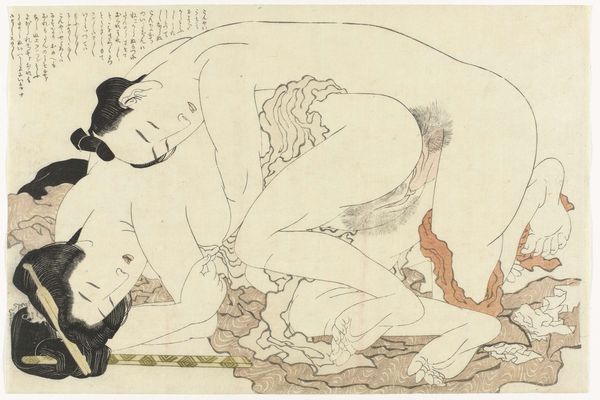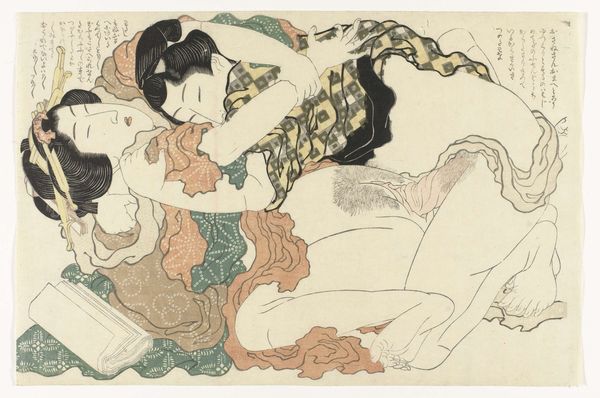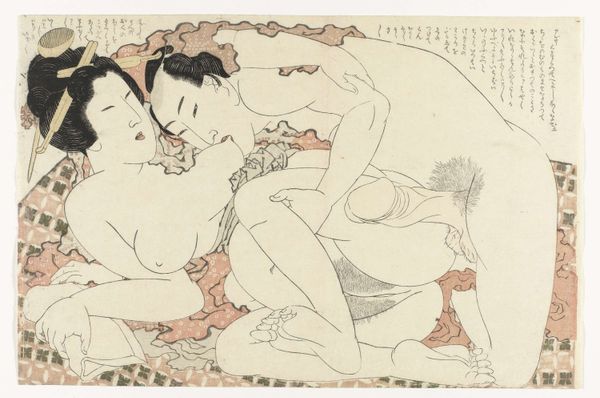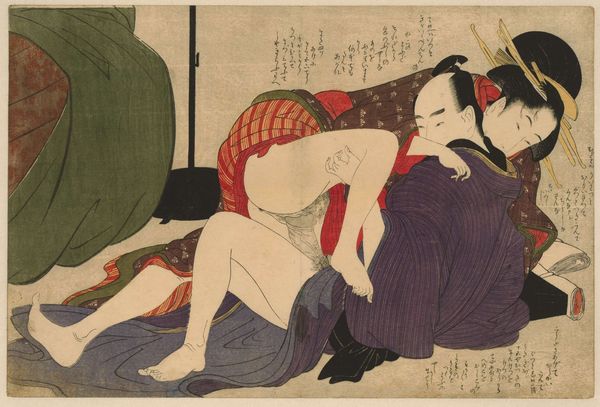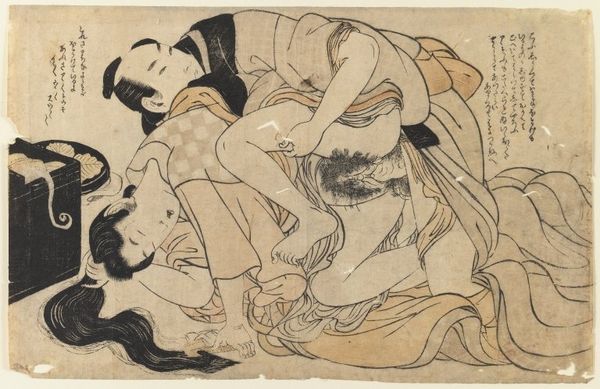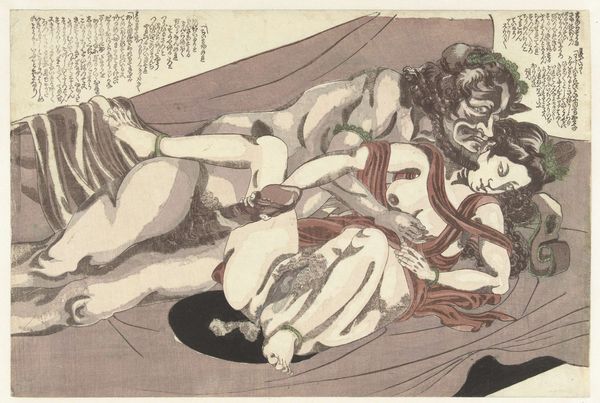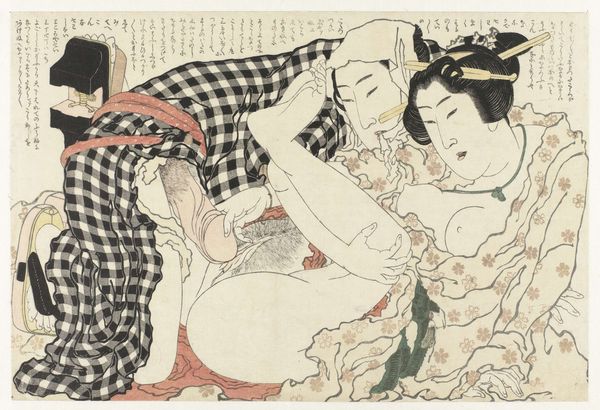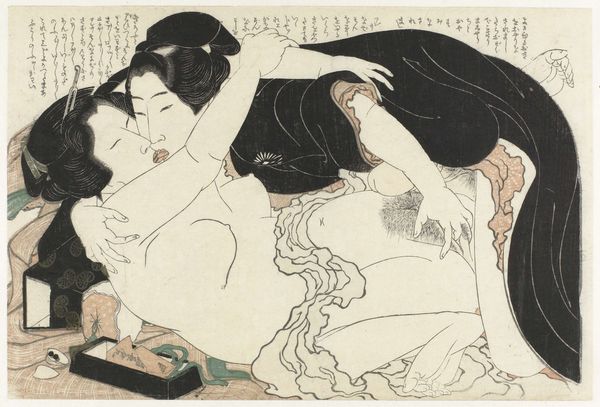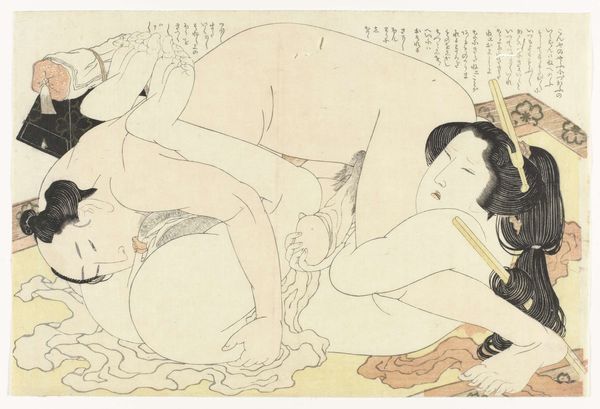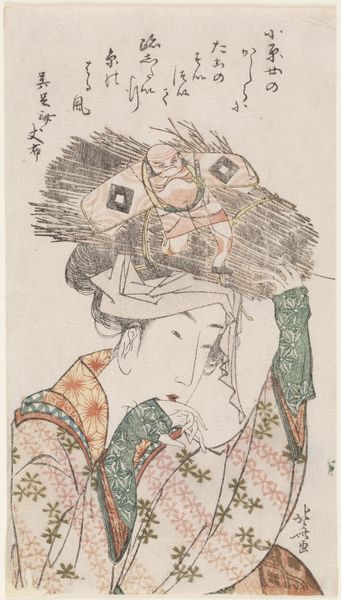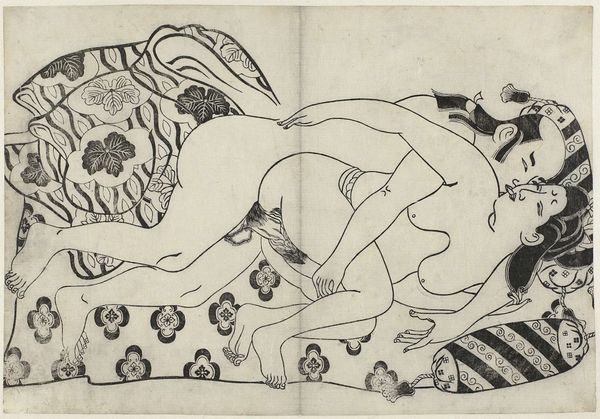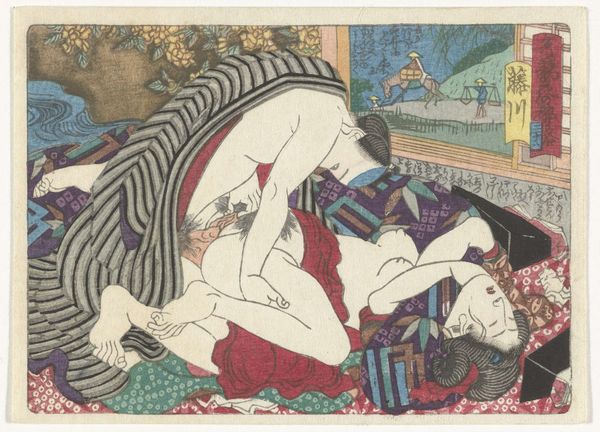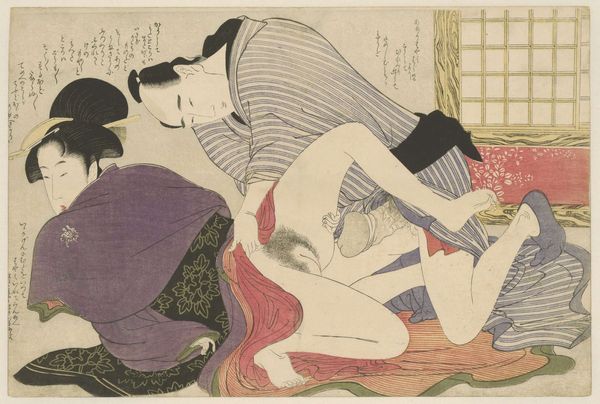
drawing, print, ink, woodcut, pen
#
drawing
# print
#
pen sketch
#
asian-art
#
ukiyo-e
#
ink
#
ink drawing experimentation
#
woodcut
#
pen
#
nude
#
erotic-art
Dimensions: height 257 mm, width 384 mm
Copyright: Rijks Museum: Open Domain
Editor: Here we have Hokusai's "Met gesloten ogen," created sometime between 1815 and 1823. It's a print using woodcut and ink. What strikes me most is the intimacy of the figures, yet also their passivity – everyone's eyes are closed. How do you interpret this work? Curator: Well, viewing this through a contemporary lens, we must address the cultural context of "shunga," erotic art, within which this print resides. Was it empowering, or exploitative, particularly for the woman depicted? Editor: That's a valid point. I hadn't considered it from that angle. The closed eyes... could that symbolize a lack of agency, or perhaps a retreat into pleasure? Curator: Precisely. Does the woman's apparent passivity reinforce societal expectations of female roles during that period, or does the depiction of pleasure offer a subversive reading against those norms? How do you think the male gaze operates here, considering that this piece was part of a larger consumer culture? Editor: I guess the commercial aspect complicates the idea of simple female empowerment. The act of selling such images – does that inherently objectify? Curator: That tension is key. "Shunga" prints were consumed by both men and women, cutting across social classes. The availability and acceptance of such imagery in 19th-century Japan challenges our modern sensibilities about censorship and representation. Can we impose our values, or must we consider it on its own terms? Editor: So it's not a straightforward narrative of oppression. The context creates so much more complexity. Curator: Exactly! Recognizing that complexity is crucial for a richer understanding, encouraging us to continuously interrogate the politics of pleasure and representation. Editor: I see it now, looking deeper than the surface is important and cultural and historical background bring a lot of depth to any piece. Curator: Yes! Nuance is really important when understanding artwork.
Comments
No comments
Be the first to comment and join the conversation on the ultimate creative platform.
